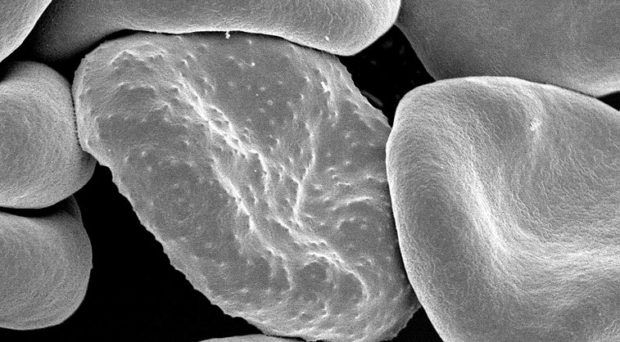
It is thought that malaria has plagued human beings since pre-historic times. Two species of the parasites that cause this disease, Plasmodium falciparum and Plasmodium vivax, are believed to have originated in Africa around 50,000-60,000 years ago and spread with humans as they migrated. Conditions conducive to the spread would be a climate favourable for the anopheline species of mosquito that act as malaria vectors and sufficient density of population to support the dissemination of parasites.
There is a suggestion that the disease arrived in Europe during the Neolithic period, 8,500 years ago, but no evidence exists to support this theory. It is, however, generally accepted that malaria had reached the shores of the Mediterranean by the time of the Roman Empire and was probably endemic in parts of ancient Greece. The evidence for this is discussed by Robert Sallares and colleagues in their comprehensive review published in 2004.
Evidence
Descriptions of patients suffering from fevers akin to malaria are found in ancient Greek literature, written in the fourth and fifth centuries BCE (Before the Common Era), and by Roman authors such as Celsus, who wrote in the first century CE (Common Era). They describe two types of intermittent fevers, characteristic of those caused by P. vivax and P. falciparum.
In recent times the discipline of bioarcheology has provided more concrete evidence that malaria was present in Italy in Roman times.
The excavation of infant cemeteries dating to circa 450 CE, that were found at Lugnano in Teverina, Italy, provided circumstantial evidence that the large number of infant deaths, that occurred during the summer of one year, were due to malaria. This was confirmed after successful amplification of a fragment of P. falciparum ribosomal DNA from one of the skeletons.
Also, evidence for the presence in Italy of P. falciparum as far back as 1st–2nd century CE was obtained from a low-coverage partial genome obtained from the skeletons of two individuals. However, the coverage was insufficient to allow the high-resolution phylogenetic analysis necessary to support a hypothesis for the origin of European P. falciparum.
A study of ancient mitochondrial DNA
A group of scientists, largely based in the University of Vienna, Austria, have recently published a pre-print in BioRxiv reporting their conclusions following a study of mitochondrial DNA (mtDNA) from an archaeological skeleton of a 2nd century CE Roman individual.

The complete, well-preserved skeleton was that of an adult male (Velia-186); one of 330 burials excavated from the location of the ancient port city of Velia, in southern Italy, and kept at the Museum of Civilizations, based in Rome.
Material for their study was collected from bones and teeth, and single-stranded libraries prepared according to protocols for ancient DNA. Libraries were enriched using baits targeting the mtDNA sequences of both P. falciparum and P. vivax.
Initial sequencing results yielded unique reads for P. falciparum and led to further analysis based on samples from teeth alone. These yielded a 43-fold mtDNA genome of P. falciparum. Results confirmed that the individual was infected with P. falciparum alone.
Present-day mitochondrial genomes were compared with this ancient consensus sequence and a phylogenetic tree constructed that showed that Vela 186 clustered exclusively with current-day strains found in India.
The authors suggest their findings support the hypothesis that P. falciparum spread to Southern Europe during the time of the First Persian Empire, founded in 550 BCE, by travelling along ancient trade routes. Furthermore, its sequence demonstrates a close phylogenetic relationship with the P. falciparum mitochondrial genome obtained from a mid-20th century CE individual from Spain, showing the genetic continuity of the lineage over the past 2,000 years.
Interestingly, a paper published in March 2024 reported an indirect approach to establishing the presence of malaria in ancient populations. Analysis of ancient genomes from Tylos-period (300 BCR-300 CR) individuals from Bahrain identified the glucose-6-phosphate dehydrogenase (G6PD) Mediterranean mutation, prevalent in populations that are, or have been, exposed to malaria. Clearly, we can expect more revelations about the history of malaria from the bioarcheologists.

Comments